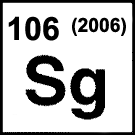Oct 13
20130
Anatomy & Physiology, Art, Biology, Chemistry, History, Physics, Science
Aeneid Alfred Nobel chemistry Erik Lindberg Latin medicine physics physiology prize Sweden Vergil
Nobel Prize 2013

“Prizes to those who, during the preceding year, shall have conferred the greatest benefit to mankind.”
The 2013 Nobel Prize awards for chemistry, physiology or medicine, and physics were recently announced as they are every year at around this time and posted here.
The Nobel Prize awards were established in 1895 according to the will of Swedish chemist, engineer, and inventor Alfred Nobel and endowed by his estate. Other than the three natural science awards, Alfred also wanted awards for literature and peace. All five Nobel Prizes were first awarded in 1901. In 1968, Sweden’s central bank established and endowed the Nobel Memorial Prize in Economic Sciences for their 300th anniversary. This prize for economics in honor of Alfred Nobel was first awarded the following year.
The Royal Swedish Academy of Sciences grants the prizes for chemistry and physics (and economics), while the Karolinska Institute grants the prize for physiology or medicine.
The Nobel Prize awards are presented in Stockholm, Sweden (except for the Nobel Peace Prize, which is presented in Oslo, Norway) every year on December 10, which is the anniversary of Alfred Nobel’s death.
The Nobel Prize science medals were designed by Swedish engraver Erik Lindberg in 1902. The Latin inscription on the medals is
Inventas vitam juvat excoluisse per artes
and can be translated as And all who found new arts, to make man’s life more blest or fair. The inscription is from Book 6, line 663 of Vergil’s Aeneid:
And poets, of whom the true-inspired song deserved Apollo’s name;
and all who found new arts, to make man’s life more blest or fair;
(translation by Theodore C. Williams)
For the chemistry and physics medals, Erik Lindberg chose to show Nature being unveiled by the Genius of Science. For the medal for physiology or medicine, Erik chose to show the Genius of Medicine gathering water to quench the thirst of a sick child.
The 2013 Nobel Prize for Chemistry is awarded to Université de Strasbourg scientist Martin Karplus, Stanford University School of Medicine scientist Michael Levitt, and University of Southern California at Los Angeles scientist Arieh Warshel for the development of multiscale models for complex chemical systems.
The 2013 Nobel Prize for Physiology or Medicine is awarded to Yale University scientist James Rothman, University of California at Berkeley scientist Randy Schekman, and Stanford University scientist Thomas Südhof for their discoveries of machinery regulating vesicle traffic, a major transport system in our cells.
The 2013 Nobel Prize for Physics is awarded to Université Libre de Bruxelles scientist François Englert and University of Edinburgh scientist Peter Higgs for the theoretical discovery of a mechanism that contributes to our understanding of the origin of mass of subatomic particles, and which recently was confirmed through the discovery of the predicted fundamental particle, by the ATLAS and CMS experiments at CERN’s Large Hadron Collider.




